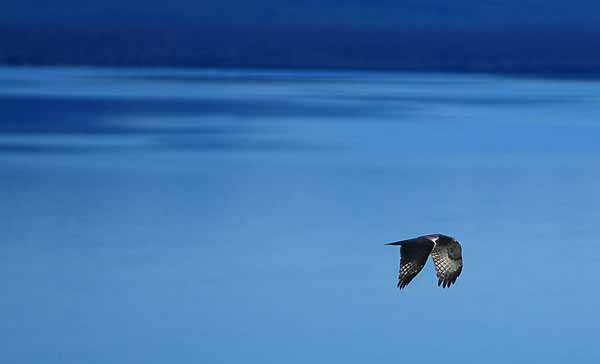
By Ruffin Prevost
CODY, WYO. — The decline in Yellowstone cutthroat trout in Yellowstone Lake has meant that anglers in Yellowstone National Park must release any of the native fish that are caught. Unfortunately, for the park’s osprey, catch-and-release fishing is not an option.
Osprey are among the 40 species of animals in Yellowstone that rely on cutthroat trout as a food source. But unlike grizzly bears, for instance, or even bald eagles—two species that can adapt their diets somewhat to different food sources depending on available prey—osprey are almost entirely reliant on fish.
While osprey in other parts of Yellowstone are holding their own, the plunge in cutthroat trout in Yellowstone Lake has been “bad news” for osprey nesting in that area, said Lisa Baril, a Yellowstone biologist who specializes in raptors.
Baril outlined the effects of cutthroat trout declines on bald eagles and osprey during a discussion last week at the Buffalo Bill Center of the West, formerly the Buffalo Bill Historical Center, in Cody, Wyo.
Over the last 25 years, invasive lake trout have reproduced rapidly in Yellowstone Lake, preying on the native cutthroat trout. Cutthroat swim into streams and rivers connected to the lake to spawn, and occupy more shallow depths in the lake than lake trout do. Lake trout eat the cutthroats and tend to stick to deeper waters, where osprey and other animals can’t catch them as easily as cutthroats.
Baril has gathered data from annual monitoring surveys of osprey and bald eagles around Yellowstone Lake to try to figure out how declines in cutthroats might be making it tougher for the birds to survive.
As it turns out, there doesn’t seem to be a strong connection between successful reproduction of bald eagles and the availability of cutthroat, Baril said.
That’s probably because “bald eagles have a wider diet,” she said, with fish making up only about 30 percent of their total prey. Bald eagles around Yellowstone Lake can turn to everything form ducks to carrion to help make up for lost trout.
Researchers studying the bald eagles and osprey along the 150 miles of Yellowstone Lake shoreline also looked for evidence that bald eagles might be faring better because they are out-competing osprey for fish.
While that direct competition between the two species may exist along the lake, Baril said researchers found no evidence of it.
The good news for osprey is that in other parts of Yellowstone, where other prey fish are more readily averrable, the birds are doing well, with populations holding steady. In fact, some osprey are probably leaving the lake for other waters inside or outside the park.
“They’re going to go wherever the food is, and the food is not at Yellowstone Lake right now, so they’re dispersing elsewhere,” Baril said.
With assistance from the Yellowstone Park Foundation, the National Park Service has hired commercial netters to remove as many lake trout from Yellowstone Lake as possible. While lake trout can’t be eradicated from the Yellowstone Lake, the goal is to reduce and hold their numbers at a level low enough that cutthroat can make a significant comeback.
More than 1.1 million lake trout have been removed since 1994, and the effort will continue, Baril said.
Annual monitoring efforts for osprey, bald eagles and other birds will also continue, as researchers and raptors wait for cutthroat to return.
There’s really not much else to do, Baril said.
“There are lots and lots of nests on Yellowstone Lake, and many of them are empty,” she said. “These nests are still there, they’re just not being occupied like they once were.”
Contact Ruffin Prevost at 307-213-9818 or [email protected].
